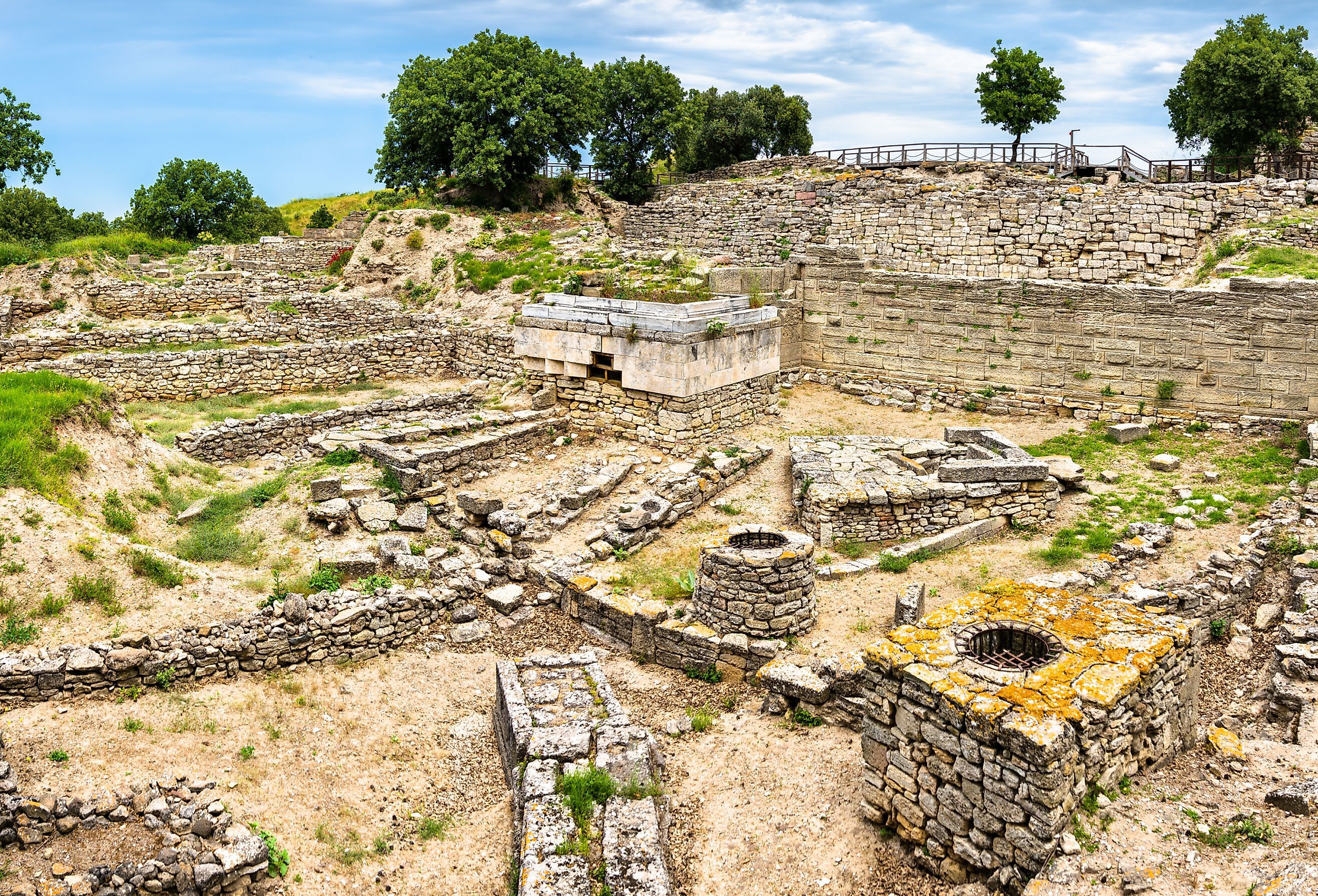
10 Places That No Longer Exist
When summer wildfires and other natural (and man-made) disasters affect communities, in much of the Western world, there is an opportunity to rebuild thanks to the backing of insurance, and preventative measures as well as through the resilience of the people. Unfortunately, this is not and has not always been the case. Sometimes, entire cities are wiped out by natural disasters, war, disease, or urban development. However, archaeologists and humans over time have discovered ruins of ancient places that no longer exist today. The following sites, though now just delicate ruins, were once thriving cities.
Pompeii
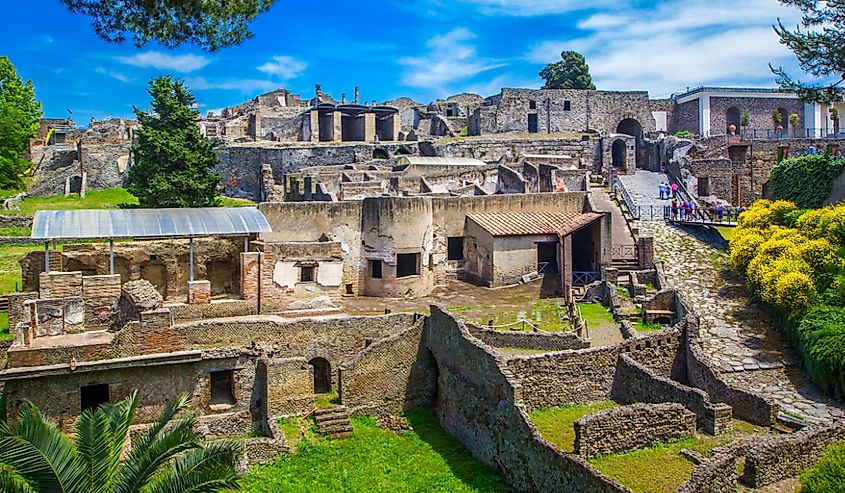
Perhaps the most famous on our list of ancient places that no longer exist is Pompeii. Located in Campania, Italy, and designated a UNESCO World Heritage site in 1997, Pompeii was once home to more than 10,000 residents. Around noon on August 24, 79 CE, Mount Vesuvius erupted, showering the city in volcanic debris. Photographs of the site suggest that residents had no warning that their city would soon be destroyed, and their lives cut short. It was not until the 18th century was the Greco-Roman city of Pompeii was discovered still perfectly intact and fossilized. Recently, archaeologists found a small room believed to be inhabited by slaves that was still blanketed in ash and volcanic glass, known as pumice. While the ash remains, the remnant of what lies beneath it disintegrates over eons. To capture a clearer picture of living conditions, archaeologists created a plaster cast to reveal the items in the room. Thanks to modern technology, our understanding of ancient times expands.
Carthage
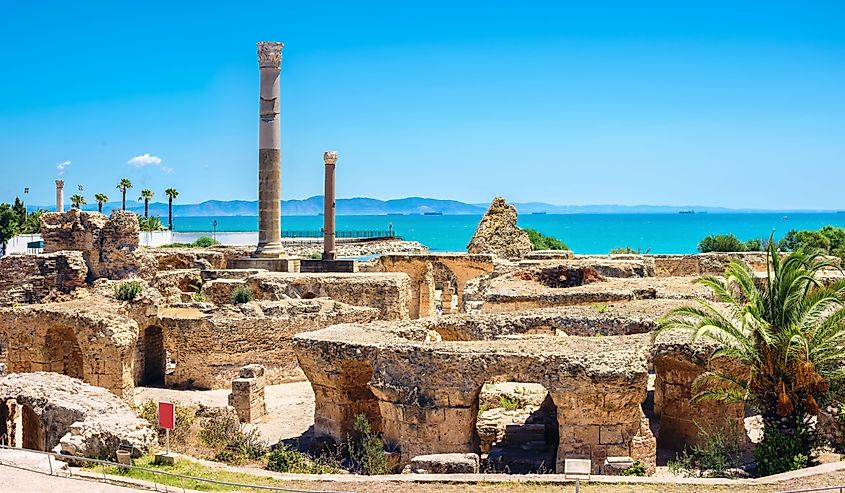
Located on the northeast coast of Africa, the ruins of the ancient city of Carthage remain in the modern-day capital of Tunis, Tunisia. Founded in the 9th century BCE by the Phoenicians, the hilltop city of Carthage once controlled the passage of ships into the Mediterranean Sea by way of the Gulf of Tunis. The ancient city was destroyed during the Third Punic War in 146 BCE. One hundred years later, it was rebuilt as Roman Carthage, which became the major city of the Roman Empire. Fragments of the Byrsa Acropolis, the Punic ports, burial grounds, amphitheater, circus, residential area, basilicas, the Baths of Antoninus, the Cisterns of La Malga, and the archaeological reserve remain. Despite the 20th-century expansion of Tunis, the site of Carthage has retained many of the characteristics of the ancient town. A UNESCO World Heritage site since 1999, Carthage is protected for its archaeological and historic significance and traditional art.
Troy
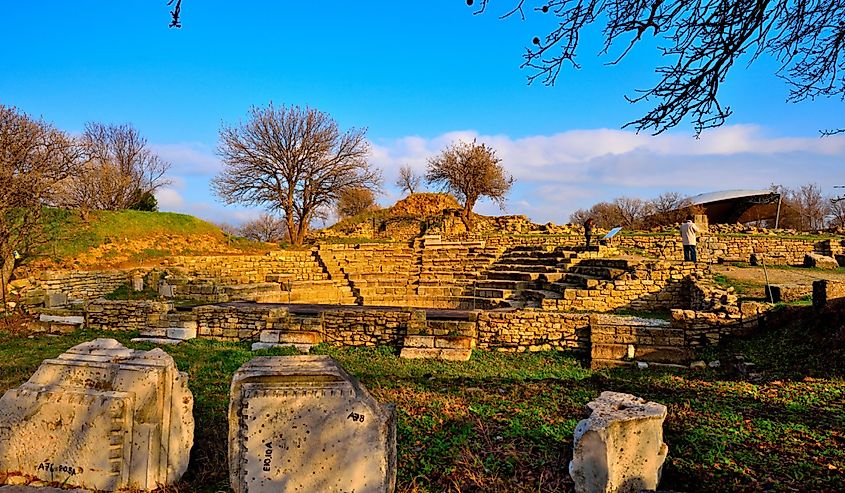
Located in Turkey and founded around 3600 BCE, the ancient city of Troy is a fascinating blend of history, myth, and pop culture. Perhaps best known for the Trojan War, a story that has captured imaginations and has been retold in various forms. Homer’s narrative poems such as "The Iliad" and "Odyssey," immortalized the city’s tragic fate. The site has an astounding 11 archaeological layers corresponding to different periods that were revealed over 4,000 years. In 1996, the Turkish government created a Historical National Park around Troy to protect the site, its monuments, and its environment. The Troy Museum at Tevfikiye Village was opened in 2018. Two thousand pieces from the museum’s collection of around 40,000 artifacts are on display. Whether as an ancient city or a symbol, Troy’s legacy remains a captivating puzzle from ancient times.
Nineveh
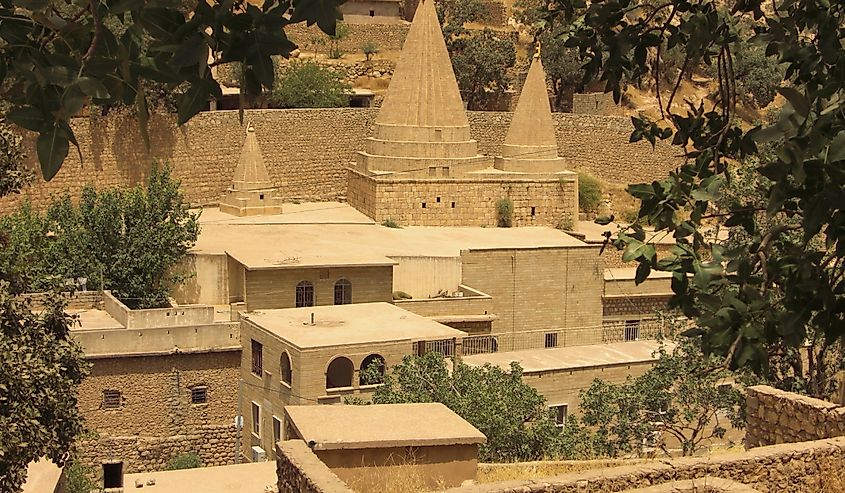
An ancient city in Iraq, Nineveh was the largest city in the world before the Assyrian Empire collapsed in 612 BCE. Centrally located between the Mediterranean Sea and the Indian Ocean, Nineveh joined the east and west and served as a major commercial port on the river Tigris. Archaeological digs of the site have revealed royal palaces, religious temples, and fortifications that included grand statues depicting a rich history of ancient Mesopotamia. The monarchs built this city and spared no expense, but Nineveh’s heyday was cut short. The Medes and the Babylonians stormed Nineveh. Those who did not escape the attack were slain and their unburied skeletons were later discovered by archaeologists. Today, a stone retaining wall and mudbrick wall 33 feet tall and 49 feet thick encircles the ruins of Nineveh. On the opposite side of the Tigris River is Mosul, which became the successor of ancient Nineveh. With a population of over 3.7 million, it is the second largest city in Iraq and home to the Nineveh ruins.
Persepolis
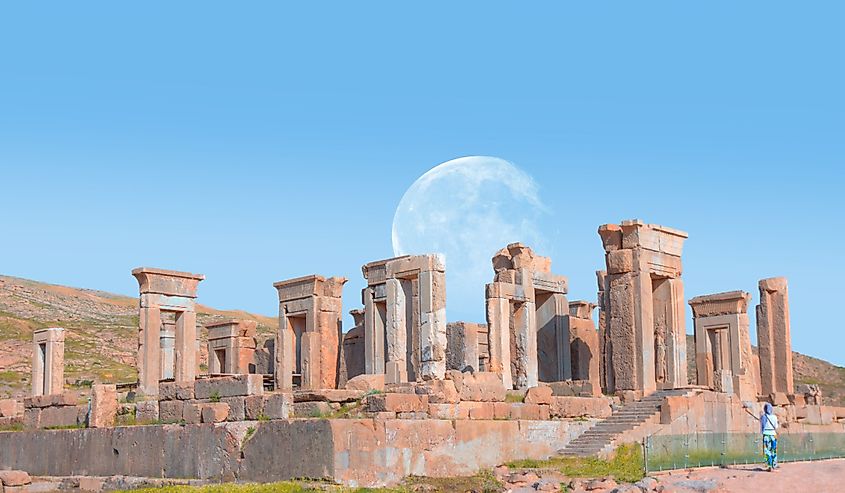
An ancient city in southwestern Iran, Persepolis was once the ceremonial capital of Achaemenian kings who ruled the Persian Empire from 705 to 330 BCE. The terraced ruins show the once massive buildings were made of highly polished grey stone that gives the appearance of marble. Detailed ornamental bas-relief carvings tell the story of Darius I, the King of Persia from 522 to 486 BCE, who named Persepolis as the capital of Persia. The grandest palace in the city was built under his rule. Archaeologists have uncovered more than 30,000 inscriptions. Because of its remote location, the city remained hidden from the Greeks until 330 BCE when Alexander the Great invaded Asia. Alexander took the city, burned the palace, and conquered the Persian Empire. Today, some remarkable bas-relief artifacts from Persepolis are housed in museums in England, the United States, Canada, and France.
Leptis Magna
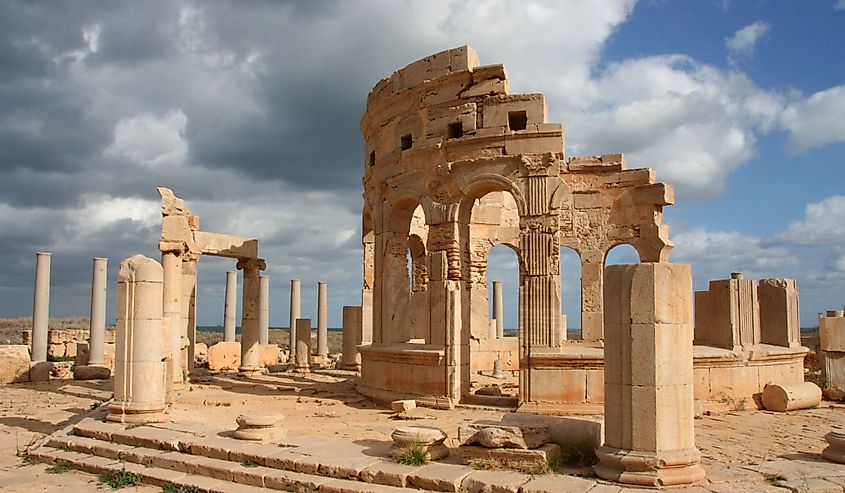
East of Tripoli on the Mediterranean coast in Libya, the capital city of Leptis Magna was named a UNESCO World Heritage Site in 1982. Part of the Roman Empire after Carthage’s defeat in the Punic Wars, Leptis Magna was founded by the Phoenicians in the second half of the 7th century BCE. A major trading post due to its optimal location, the city expanded under Roman rule. Around 193 CE, Roman emperor Septimius Severus poured massive wealth into the city’s construction. Its fall came when trade declined, and Leptis Magna was eventually wiped out by a tsunami in 365 CE. All that remains today are the impressive ruins of a once-prominent capital city. Visitors can marvel at the marketplace, the amphitheater, Leptis’s most famous monument Arch of Septimius Severus, and the Severan Basilica.
Ephesus
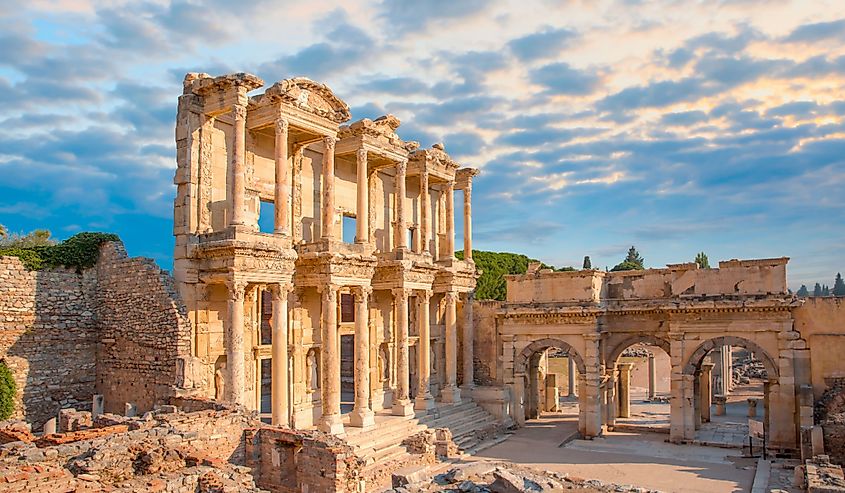
Tourists amble through the extraordinary ruins of the once-Greek city of Ephesus near the village of Selçuk in western Turkey on the Aegean Sea. It remains one of the largest Roman archaeological sites in the eastern Mediterranean. Though the city was founded in the 10th century BCE, unearthed evidence shows that humans started occupying this area as early as 6,000 BCE in the prehistoric Neolithic age. Significant to Ephesus’s history is its relationship with Christianity. Apostle Paul lived in Ephesus from 52-54 CE and organized missionary activity in the city. When he was later imprisoned, he wrote the letter 1 Corinthians sharing problems of dissension that arose in his early missionary work. When it comes to the architecture of antiquity, Ephesus’s magnificence cannot be overstated. The famed Temple of Artemis was one of the Seven Wonders of the Ancient World. While little of it remains today, this site is still one of Turkey’s most popular tourist destinations and two million visitors flock to it every year.
Herculaneum
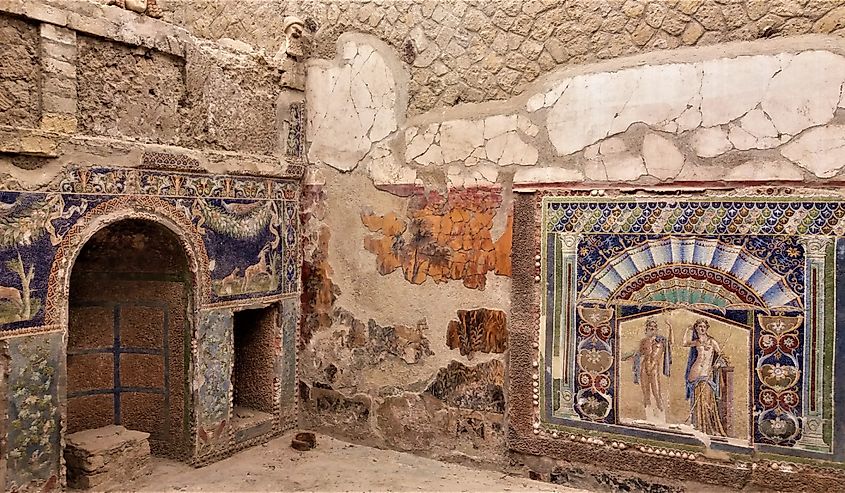
Another victim of Mount Vesuvius, Herculaneum was an ancient Roman town in Campania, Italy. Though named after the Roman mythological hero, Hercules, the city was no match for Vesuvius. The ruins of Herculaneum, along with Pompeii and Torre Annunziata were declared a UNESCO World Heritage site in 1997. Early excavations of the site suggested that residents of the town may have had more warning than those in Pompeii since very few human remains were uncovered. Holes in the 1980s of the ancient shorelines of the Bay of Naples, however, revealed skeletons that told a more complete story—many residents of Herculaneum had died while attempting to flee. Like Pompeii, excavation of the site didn’t begin until hundreds of years after the eruption when it was rediscovered by chance. Some of the ruins were as much as 50 feet deep and almost perfectly preserved. Its excavation continues today.
Palmyra
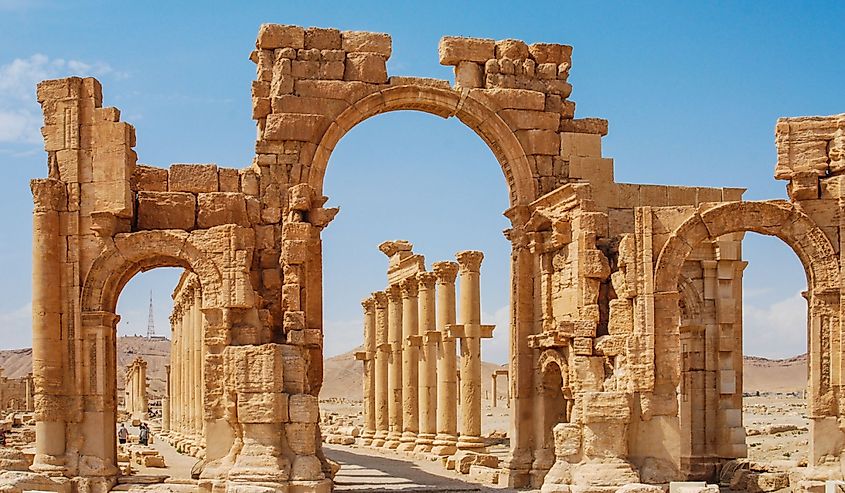
In the center of the Syrian desert lies the ruins of the ancient city of Palmyra. Like many of the places that no longer exist on this list, Palmyra came under the rule of the Roman Empire in the first century CE. A thriving trading center along the Silk Road route, the city’s wealth allowed for some extraordinary architectural marvels, including the Temple of Bel, which was named for the Mesopotamian god Bel. Columns of the temple, which was converted into a Christian church during the Byzantine Era, still stand today. While two mountain ranges overlook the ancient city, it is exposed to the Syrian desert on two sides. Palmyrene history is deep and diluted and she continues to evolve in modern times with the Syrian civil war and fighting involving ISIL as recent as 2017.
Mohenjo-Daro
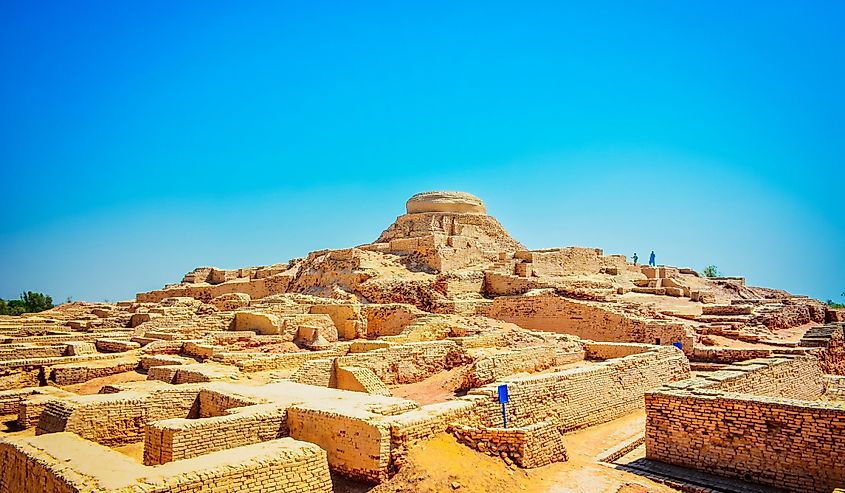
An archaeological ruin today, Mohenjo-Daro was once a bustling city located in present-day Pakistan. The city’s layout showcases a remarkable grid system of streets, advanced drainage systems, and multi-level brick structures, reflecting a complex society with a high level of social organization. Archaeological digs have uncovered delicately crafted pottery, intricate jewelry, and a distinct emphasis on bathing rituals, which provides insights into a culture that held aesthetics and health in high regard. Natural disasters and shifts in river courses are believed to be among the factors that led to Mohenjo-Daro’s desertion in the 19th century BCE. Named a UNESCO World Heritage Site in 1980, Mohenjo-Daro was the first city in South Asia to receive that designation. Built-in the 26th century BCE, the ancient city offers a window into the achievements and mysteries of a civilization lost in time until its rediscovery in 1919-20.
Conclusion
These ancient places offer glimpses into the history, culture, and architecture of their respective periods, and their ruins continue to capture the imagination of people today. Thousands of years into the future, imagine what people will discover about how our society conducts itself and how we have lived our lives. How much of our disposable culture will remain? And will future people ever have a hope of knowing who we were? Only time will tell.











